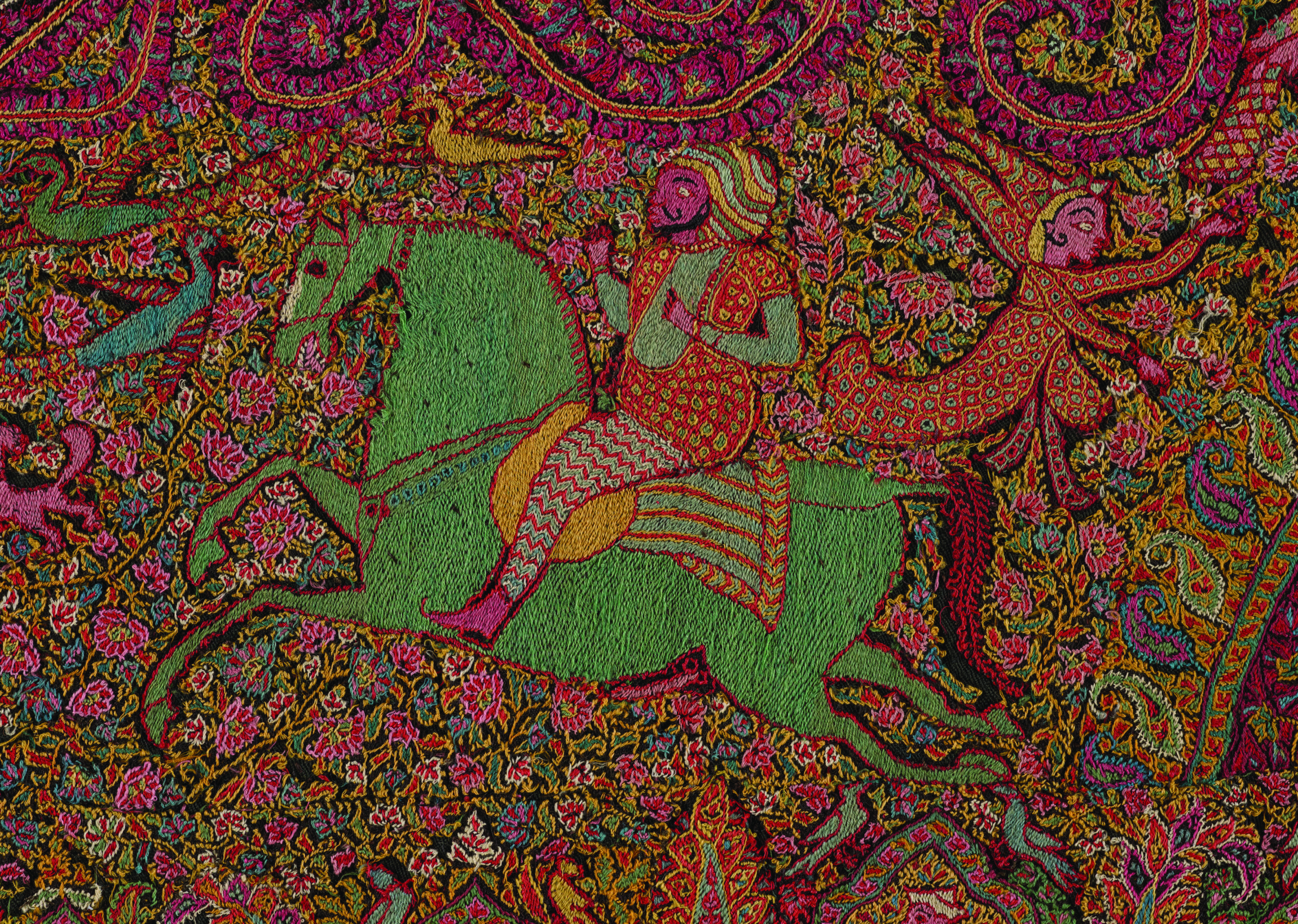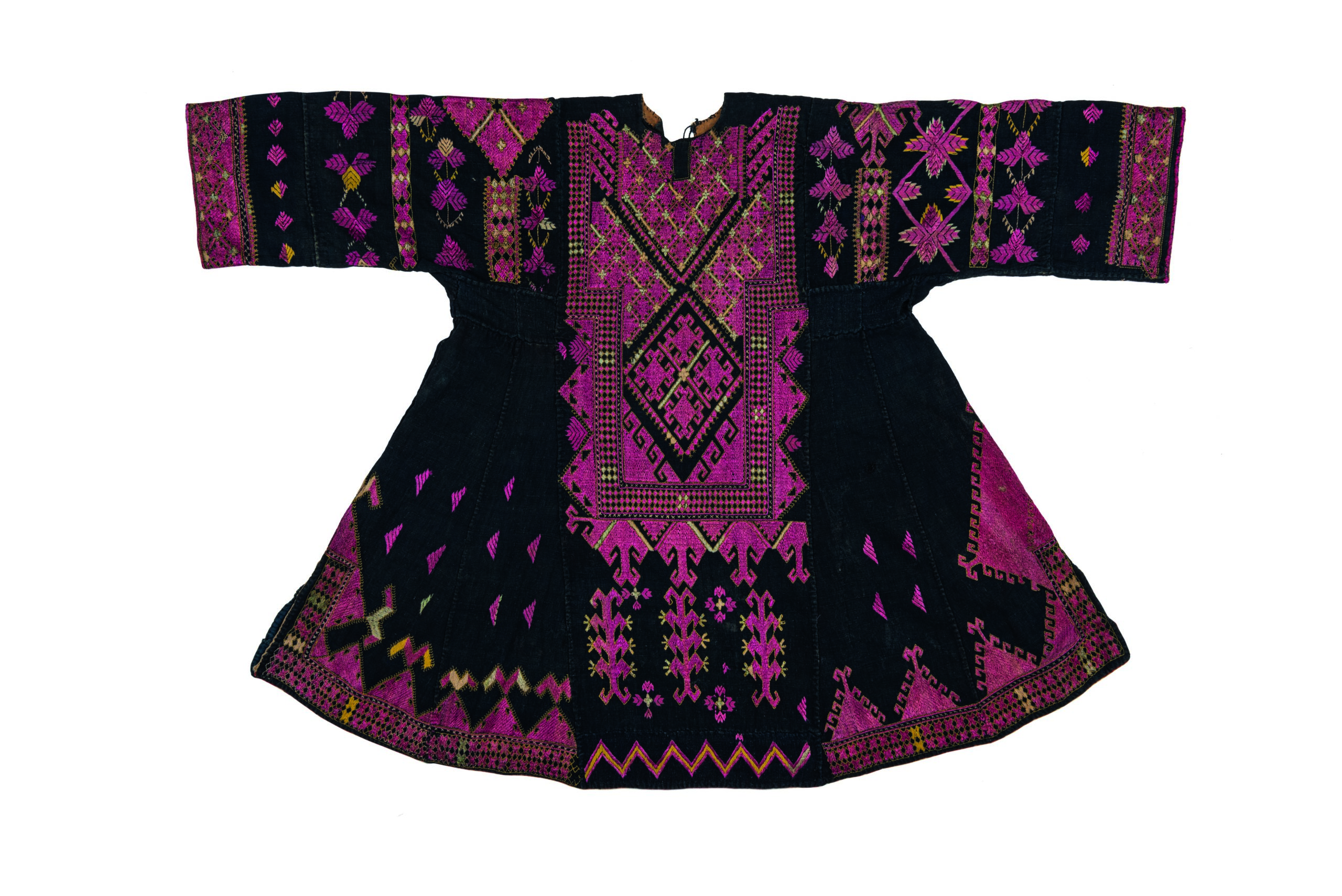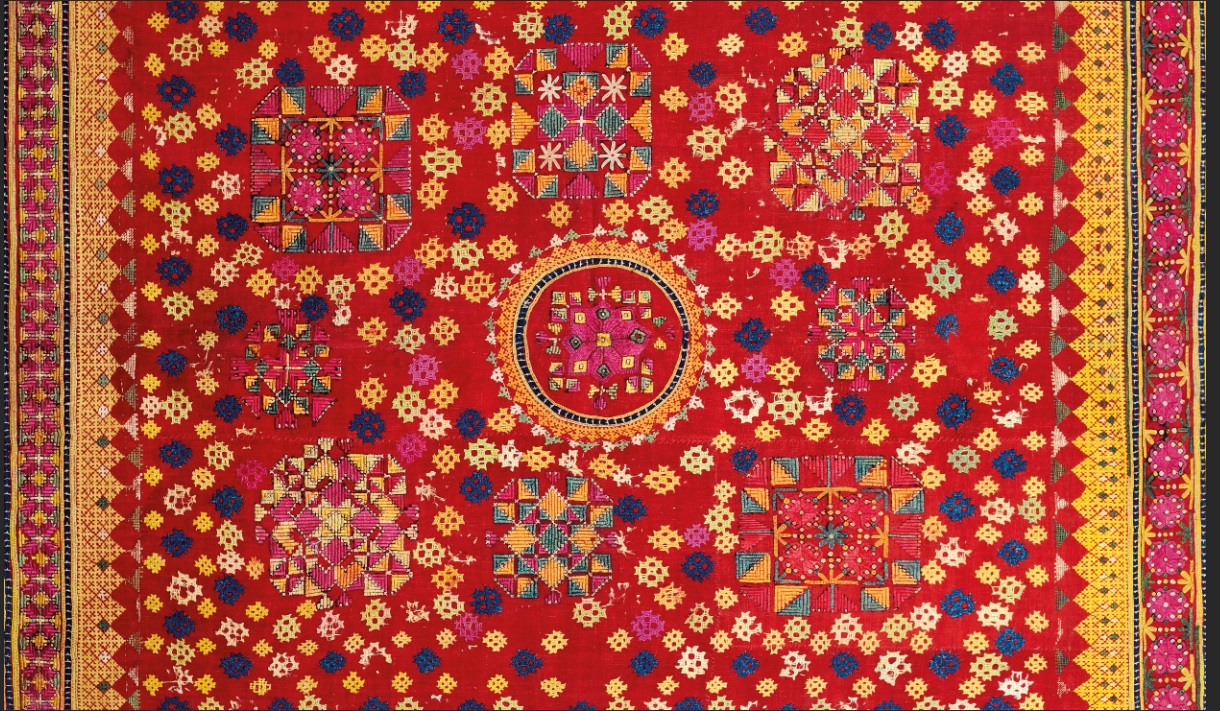Indian Textiles:1,000 years of art and design, 22 January 2022
A collaboration between The Textile Museum in Washington, DC and the Karun Thakar Collection in London will result in a stunning exhibition of Indian textile art—The Textile Museum’s first in 40 years. Bringing together star pieces from both collections, the show takes a new approach to the appreciation of Indian textiles. ‘Indian Textiles:1,000 years of art and design’ opens from 22 January to 6 June 2022 and is accompanied by a limited-edition catalogue that is now available for purchase from the HALI Bookshop. This book includes essays by leading historians of Indian textiles, including Rosemary Crill, Steven Cohen, Avalon Fotheringham and Sylvia Houghteling and will showcase court weavings, folk embroideries and other fabrics from the 9th through the early 20th centuries. In HALI 210 Rosemary Crill, editor of the accompanying catalogue, explores the ideas behind the exhibition. An abridged extract follows:
India’s textile traditions are so many and so varied that any number of exhibitions could be held on their regional or technical types. Major museum shows have approached the subject either with a particular focus, on Bengali kanthas or Punjabi phulkaris for example, or attempted a wider overview. Surprisingly, none have taken the designs of Indian textiles as their starting point, and it is this new focus that underpins the exhibition ‘Indian Textiles: 1,000 Years of Art and Design’. Rather than selecting pieces that typify regional textile types, historical periods or techniques, pieces are grouped into three broad categories of abstract, floral and figural designs. This approach invites the viewer to compare similar types of motif and composition from different regions and time periods—a Deccani flowering tree panel with similar designs from Kashmir and on an export chintz, for example—or to follow the evolution of patterns and designs, such as the progression from the simplest striped cloth to a dazzling bagh, or a Mughal naturalistic flower to an elaborate Kashmir shawl made for export to Europe.

Table-cover or canopy (detail), Kashmir, mid-19th century. The Textile Museum, Acquired by George Hewitt Myers in 1952
Below is a recognised variation of a Swat Valley kurta, combining mostly abstract geometric embroidered motifs— diamonds, triangles, stars, zigzags, stylised ram’s horns etc. —with a much smaller number of loosely floral-based forms which, themselves, are becoming abstracted. Most of the floss silk has been dyed bright pink and is embroidered in surface darning stitch, with minor touches, especially outlining most of the major pink motifs, in yellow with white highlights and, as in the other examples of this group, the ground cloth is a very dark hand-spun, hand-woven indigo blue-black cotton.

Woman’s shirt or tunic (kurta) Swat Valley, Khyber Pakhtunkhwa, Pakistan, late 19th or 20th century. Karun Thakar Collection
The wide variety of textiles on show includes block-printed cottons exported to Egypt, animal-patterned silks from the Sultanate period, floral hangings from the Mughal and Deccani courts, Kashmir shawls made both for local and western use, figural hangings made for export to Indonesia and colourful domestic embroideries from the villages of Gujarat, Punjab, Bengal and the Himalayan foothills. The juxtaposition of pieces with related motifs shows how different types of patronage resulted in variations of themes. Shared techniques lead to similarities in design: embroideries which follow the weave of a cloth (like Punjabi baghs, Kohistani purses or Sindhi soof embroidery) tend to result in geometric patterns formed of straight lines, while those applied freehand to a fabric have a much wider range of possibilities, including elaborate floral or figural designs.

Coverlet (thalposh) or dowry wrapper Sukkur, Sindh, Pakistan, late 19th or early 20th century. Karun Thakar Collection
As well as their relationship to the exhibition’s underlying concept, every piece in this exhibition was also chosen for its visual appeal as an object in its own right. The curatorial team hope that the textiles on view bring pleasure and even excitement to visitors; if they leave thinking a little differently about Indian textiles, that will surely be an additional bonus.
Read the full article in HALI 210.


























Comments [0] Sign in to comment